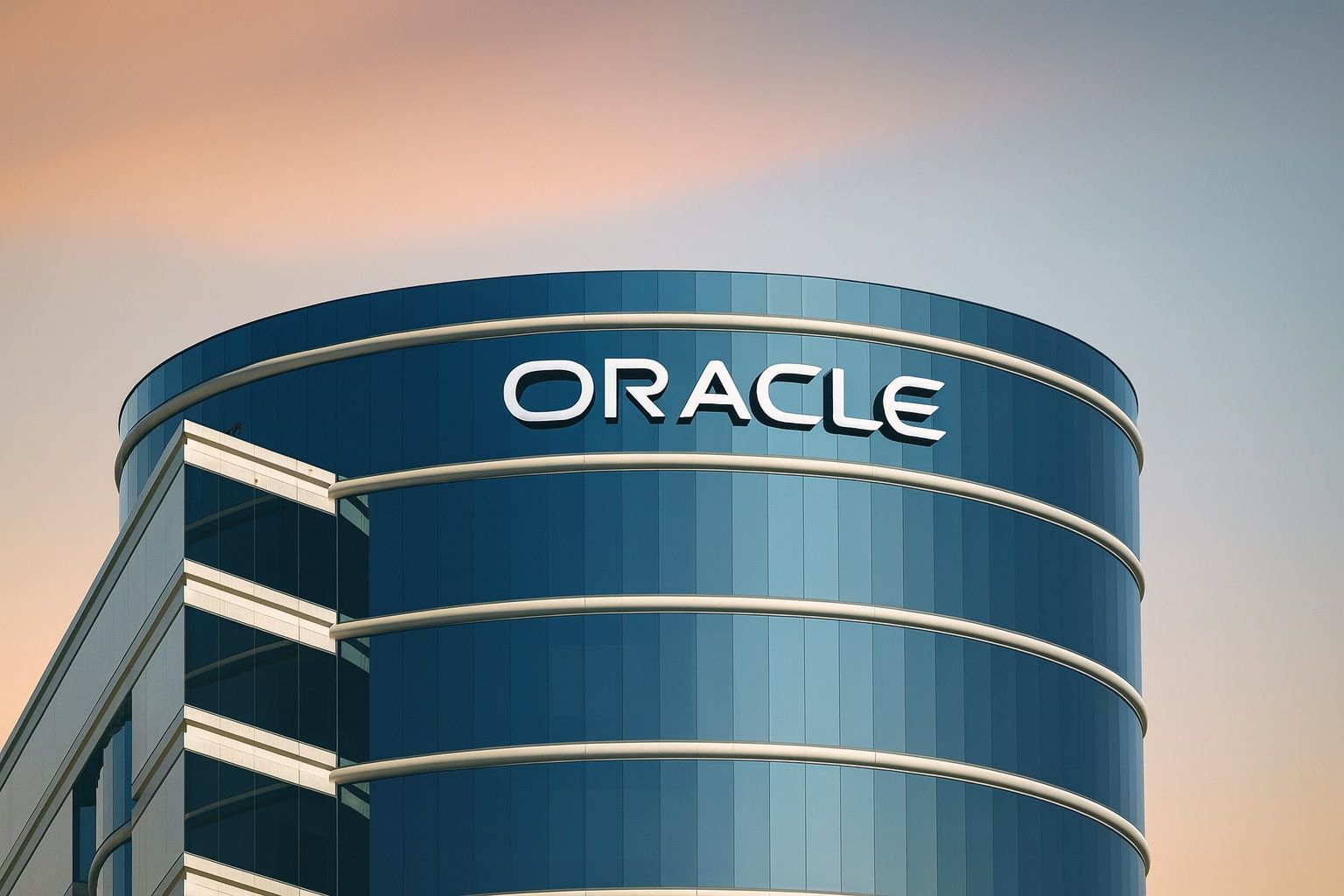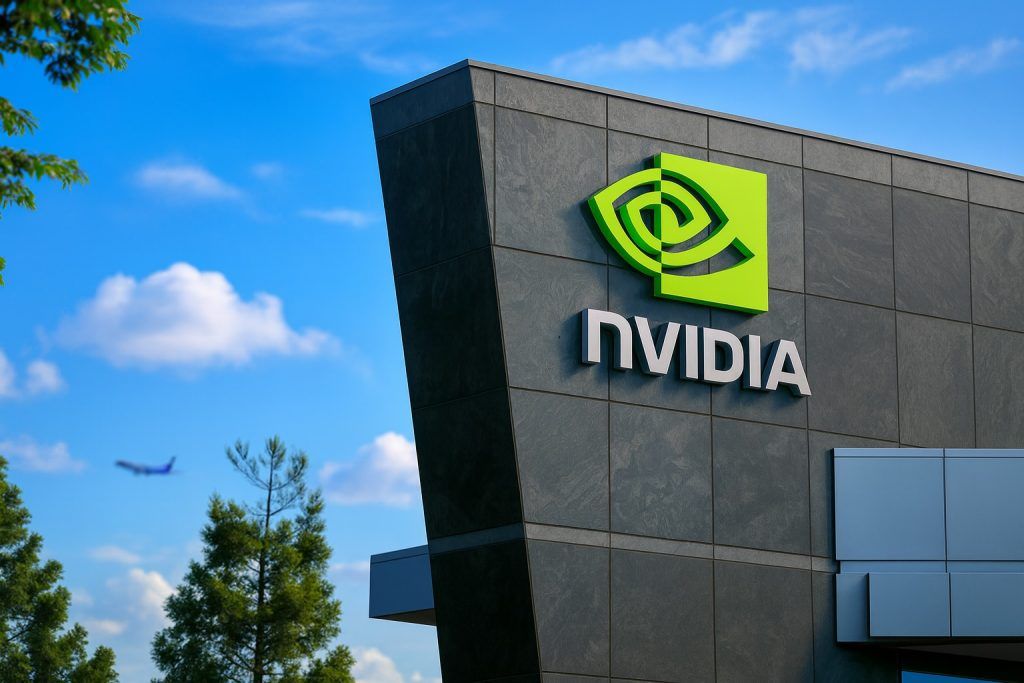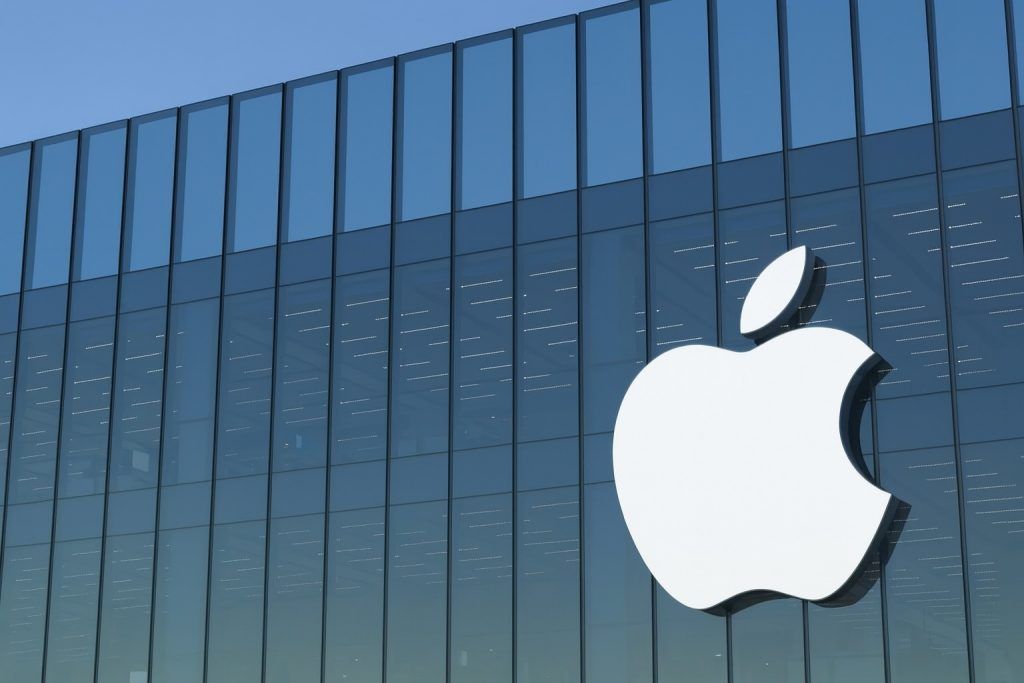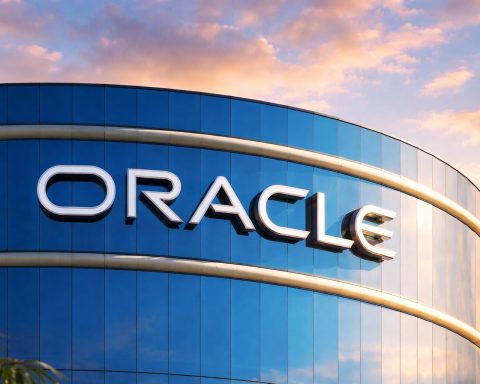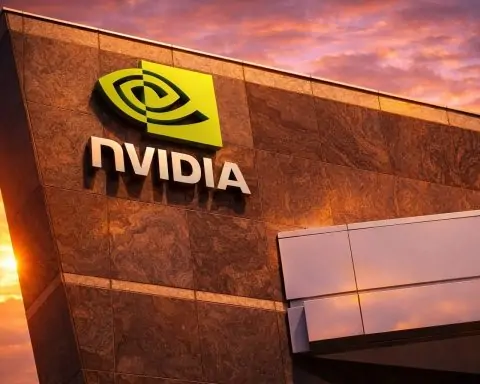- Mega AI Cloud Contracts: Oracle has clinched some of the largest cloud deals in history, including a reported $300 billion, five-year commitment from OpenAI to power ChatGPT and other AI models [1]. At its Oracle AI World conference, Oracle also announced a $65 billion cloud infrastructure partnership with Meta Platforms, part of a wave of massive AI investments by tech giants [2]. These deals – among seven major AI contracts signed with clients like OpenAI and Meta – have swelled Oracle’s cloud backlog and signal unprecedented demand for its Oracle Cloud Infrastructure (OCI) [3].
- “World’s Largest” AI Supercomputer: Oracle unveiled what it calls the world’s largest AI supercomputer in the cloud, built in collaboration with OpenAI. The system will span multiple data centers and link up to 800,000 NVIDIA GPUs, delivering 16 zettaFLOPS of peak performance [4]. Oracle is also partnering with AMD to deploy 50,000 of AMD’s next-gen MI450 AI chips in OCI by late 2026, expanding further in 2027 to meet surging AI workload demand [5] [6]. In addition, Oracle launched new Ampere A4 instance servers – making it the first cloud provider to offer Ampere’s latest Arm chips – to boost AI inferencing performance with greater energy efficiency [7] [8].
- New AI Products & Services: To help enterprises adopt AI, Oracle introduced the Oracle AI Data Platform – a unified data and AI toolkit that connects generative AI models with companies’ enterprise data, applications, and workflows [9]. This platform automates data ingestion, uses vector databases for semantic search, and lets businesses deploy AI “agents” that can act on insights. Oracle also launched an AI Agent Marketplace for its cloud applications, allowing customers to plug in pre-built AI assistants (from Oracle and partners like IBM) to automate tasks in ERP, HR, and CRM systems [10] [11]. Together, these tools aim to “embed AI in all our cloud applications,” as Oracle’s leadership has promised, accelerating enterprise AI adoption with security and ease [12] [13].
- Multi-Cloud Expansion: Embracing a multi-cloud strategy, Oracle rolled out Oracle Multicloud Universal Credits, a first-of-its-kind cross-cloud purchasing model [14]. Customers can buy credits and use Oracle’s database and OCI services on AWS, Microsoft Azure, Google Cloud, or Oracle Cloud with unified contracts [15] [16]. This move builds on Oracle’s recent partnerships with rival cloud providers – for example, letting Azure and AWS customers run Oracle’s database services natively in those clouds – and is meant to give enterprises maximum flexibility. Analysts at IDC called the cross-cloud approach “jet fuel” for adoption of Oracle’s services across environments [17]. Oracle notes that the strategy is already paying off, citing a surge in usage from other clouds as companies mix and match Oracle’s tech with other platforms [18].
- Government & Industry Wins: Oracle’s push extends to the public sector and global enterprises. In the UK, the Home Office just signed a new £54 million (~$72M), five-year cloud agreement with Oracle for SaaS, PaaS, and IaaS services to support critical government systems [19]. In the U.S., a landmark “OneGov” contract with the General Services Administration is offering federal agencies deep 75% discounts on Oracle software licenses and special OCI pricing, underscoring Oracle’s willingness to cut prices to win cloud market share [20] [21]. Oracle’s role as the secure U.S. cloud partner for TikTok was also reaffirmed recently – a deal that could add an estimated $1–2 billion in annual revenue as TikTok’s American operations run on Oracle’s infrastructure [22]. Meanwhile, industry collaborations are growing: Oracle and IBM announced new joint AI solutions (like finance-focused AI agents built on Oracle’s platform) [23], and Oracle continues to work closely with Ampere, NVIDIA, Cohere, and other tech players to enrich its cloud ecosystem.
- Executive Insight & Outlook: At Oracle AI World, founder and CTO Larry Ellison struck an optimistic tone about AI’s potential, declaring we’re at a “tipping point” where AI will help solve “humanity’s most difficult and enduring problems” – not replace workers [24] [25]. Ellison noted Oracle itself is using generative AI to write code and boost productivity, and he emphasized that AI will augment employees (“bringing the human forward”) rather than make them obsolete [26] [27]. Wall Street analysts, impressed by Oracle’s transformation, describe the company as entering “a new growth phase” fueled by AI and cloud momentum [28]. Oracle projects its annual revenue will nearly quadruple to $225 billion by 2030, with cloud infrastructure sales surging at a 75% yearly pace to roughly $166 billion by then [29] [30]. This bullish forecast – one of the most aggressive in the industry – reflects Oracle’s confidence in converting its huge AI pipeline into long-term growth. Some skeptics caution that such massive deals carry risks (one analyst warned the $300B OpenAI contract is “very risky” and might pressure margins) [31] [32], but the overall market sentiment has shifted decidedly positive. Oracle’s pivot from legacy database vendor to AI-driven cloud contender has not only vaulted its stock to record highs, but also positioned the 46-year-old company as an unexpected leader in the race to build the next generation of AI infrastructure [33] [34].
Oracle’s Historic AI Cloud Deals Fuel Ambitions
Oracle has seized center stage in the artificial intelligence race by securing eye-popping cloud contracts to host and train the world’s most advanced AI models. In a move that stunned the tech industry, OpenAI – creator of ChatGPT – agreed to spend a reported $300 billion on Oracle Cloud over five years [35]. If fully realized, it ranks as one of the largest cloud deals ever and instantly turbocharges Oracle’s cloud business. This year Oracle also inked a major partnership with Meta Platforms, which committed roughly $65 billion for Oracle’s cloud services as Meta expands its AI infrastructure [36]. Both deals were highlighted during Oracle’s AI World conference in Las Vegas and signal that global AI leaders trust Oracle to deliver critical computing power.
Oracle says these mega-contracts are part of a broader surge in demand. In just one 30-day span this quarter, the company signed about $65 billion in new cloud commitments across seven big contracts (including OpenAI and Meta), far exceeding expectations [37]. As a result, Oracle’s remaining performance obligation – essentially its backlog of cloud work – soared to $455 billion, a 359% jump year-over-year [38] [39]. “Over the next few months, we expect to sign up several additional multi-billion-dollar customers,” CEO Safra Catz told investors, projecting the backlog will top half a trillion dollars in the near term [40].
This unprecedented influx of AI business has fundamentally changed Oracle’s trajectory. The company is now forecasting 31% annual revenue growth as it scales up to meet demand [41]. By fiscal 2030 (Oracle’s FY ends in May), Oracle aims to hit $225 billion in revenue – nearly four times last year’s level – with over $160 billion of that coming from cloud infrastructure services [42] [43]. For context, Oracle’s total revenue last quarter was about $15 billion [44], so these goals represent a dramatic leap. Jefferies analysts, raising their outlook on the company, called Oracle “a rare acceleration story” in enterprise tech and credited its AI-focused cloud strategy for ushering in a “new growth phase” [45] [46].
However, the bold bets aren’t without controversy. The sheer scale of the OpenAI deal, for example, has prompted debate about profitability. Building and operating cutting-edge data centers for generative AI is enormously expensive, and some analysts worry Oracle may be sacrificing margins to land marquee clients. A recent Bloomberg report claimed Oracle’s margin on some AI cloud services could be as low as ~14%, triggering investor concern [47] [48]. And in a contrarian note, analysts at Redburn cautioned that the $300B OpenAI contract is “very risky”, questioning whether the full amount will materialize and if demand justifies the cost [49]. Oracle’s stock briefly stumbled on such worries, falling about 7% on Oct. 17 after the company’s ambitious targets and spending plans faced scrutiny [50]. Nonetheless, most observers see these deals as a transformative positive: Oracle is locking in long-term commitments from AI’s biggest players, effectively ensuring that a large share of next-generation AI workloads will run on Oracle Cloud. With the AI boom turning cloud capacity into the tech world’s hottest commodity, Oracle’s aggressive move has vaulted it into the top tier of cloud providers virtually overnight.
Oracle AI World 2025: Superclusters, Chips and Co-CEOs
Oracle’s newfound momentum was on full display at its Oracle AI World 2025 conference (Oct. 13–16) – an event rebranded from “CloudWorld” to reflect the company’s AI-centric direction. In the opening keynotes, Oracle’s newly named co-CEOs, Clay Magouyrk and Mike Sicilia, outlined a vision of Oracle as a leader in AI infrastructure and enterprise AI solutions [51]. (The duo, both seasoned cloud executives, were appointed in a surprise September leadership shake-up; longtime CEO Safra Catz will shift to Vice Chair, while founder Larry Ellison remains Chairman/CTO [52]. Analysts viewed the succession plan as reinforcing Oracle’s cloud focus, noting that elevating Magouyrk and Sicilia “solidif[ies] the importance of the Cloud and Industry businesses as growth levers” [53].)
Stealing the show in Las Vegas was Oracle’s reveal of a colossal new AI supercomputer – touted as the world’s largest AI supercomputer in the cloud. Ellison announced that Oracle, together with OpenAI, is constructing a distributed supercluster that will connect multiple data centers into one seamless AI powerhouse [54]. Specifications are staggering: up to 800,000 NVIDIA GPUs working in tandem, delivering 16 zettaFLOPS (that’s 16 10^21 floating-point operations per second) of peak AI computing power [55]. By comparison, Oracle noted that the human brain operates at roughly 20 watts, whereas this machine will draw over a billion watts – underscoring the enormous scale of AI computing now being built [56] [57]. This supercomputer, part of Oracle’s and OpenAI’s joint “Project Stargate”, will be anchored at Oracle’s new 1,000-acre cloud campus in Abilene, Texas, and is expected to come online in phases to support OpenAI’s growing training needs [58] [59].
Oracle is also diversifying its silicon to avoid bottlenecks in AI supply. At AI World, the company confirmed a deepening alliance with AMD – announcing that OCI will incorporate 50,000 of AMD’s forthcoming Instinct MI450 accelerators in late 2026, with expansion in subsequent years [60] [61]. These new GPUs will form additional “AI superclusters” based on AMD’s modular “Helios” rack design, complementing Oracle’s NVIDIA GPU farms [62] [63]. The move makes Oracle one of AMD’s marquee cloud clients (alongside Microsoft’s Azure), and it follows AMD’s own deal to supply AI chips to OpenAI – a partnership in which OpenAI even gained an option to take a stake in AMD [64]. Oracle’s bet on AMD is notable at a time when NVIDIA dominates AI hardware; Oracle executives said demand for large-scale AI capacity is so high that tapping multiple chip vendors is essential [65]. Oracle’s Clay Magouyrk affirmed that without AMD and other partners, “Oracle and OCI wouldn’t be where it is today,” thanking early customers like TikTok’s ByteDance for fueling its scale [66] [67]. (TikTok’s U.S. data – now overseen by Oracle under a government-supported arrangement – has been a catalyst for OCI, potentially adding $1–2 billion in annual revenue [68].)
In addition to GPUs, Oracle continues to push Arm-based CPU technology in the cloud. On October 17, Oracle announced an expanded partnership with chip startup Ampere Computing, unveiling the upcoming OCI A4 compute instances powered by Ampere’s newest AmpereOne® M processors [69]. Oracle will be the first cloud provider to launch these AmpereOne M chips, which are purpose-built for cloud-native and AI inference workloads [70] [71]. The A4 servers (96 cores at 3.6GHz, with 100 Gb networking) promise up to 45% better per-core performance than prior Ampere generations and significantly higher price-performance for scaling out AI inference jobs [72] [73]. Oracle boasts that Ampere’s efficiency gives A4 instances an 83% price-performance advantage vs. GPU-based systems for certain AI tasks, providing a greener, cheaper option for running small and mid-sized language models like Meta’s Llama 3.1 [74] [75]. Early adopters like Uber (a major OCI customer) and Oracle’s own Red Bull Racing F1 team report double-digit performance gains with lower power use on A4 instances [76] [77]. By rolling out A4 globally in November, Oracle is doubling down on its strategy of offering specialized compute options – from GPUs to custom Arm chips – to attract a wide range of AI workloads to its cloud.
New AI Software and Multicloud Offerings
Beyond raw infrastructure, Oracle used its AI World stage to debut several software innovations aimed at making AI more accessible to enterprises. A centerpiece is the new Oracle AI Data Platform, now generally available [78]. This platform is essentially Oracle’s answer to a comprehensive AI “studio” for businesses: it helps organizations connect large generative AI models to their own data securely, and then build custom applications (“AI agents”) that leverage those models [79] [80]. The AI Data Platform automates many heavy lifts – it can ingest and prepare data from various sources, perform semantic enrichment and vector indexing (key for AI search and contextual understanding), and provides built-in generative AI model access and tools [81] [82]. Under the hood, it runs on a combination of Oracle’s cloud services: Oracle Autonomous Database (with new AI features), OCI’s AI services, and high-performance NVIDIA GPU infrastructure for any model training or inference needed [83].
The goal, Oracle says, is to “simplify the entire journey from raw data to production-grade AI.” Business users get real-time insights and AI-powered assistants that can automate tasks or surface opportunities, while developers and data scientists have a unified platform to rapidly build and deploy AI solutions [84] [85]. “Oracle AI Data Platform enables customers to get their data ready for AI and then leverage AI to transform every business process,” explained T.K. Anand, Oracle’s EVP for Data and AI [86] [87]. He touted it as “the most comprehensive foundation” for enterprises to harness AI with confidence, security, and agility [88]. In practical terms, the platform supports popular open data formats (like Delta Lake and Iceberg) to avoid duplication, provides a unified catalog for data governance, and even includes an Agent Hub to coordinate multiple AI agents and ensure they follow business rules [89] [90]. Recognizing that many companies rely on consultants to implement AI, Oracle lined up major integrators – Accenture, Cognizant, KPMG, PwC, and others – who together have committed $1.5 billion to train staff on Oracle’s AI platform and develop industry-specific AI use cases [91] [92]. This partner investment signals confidence that Oracle’s solution will be widely adopted as enterprises embark on AI projects.
Oracle is also weaving AI capabilities directly into its existing cloud application suites. Over the past year, Oracle’s development teams delivered 600+ ready-to-use AI “agents” across its Fusion Cloud Applications for finance, HR, supply chain, customer experience and more [93] [94]. (This far exceeds the company’s initial pledge of 100 AI-powered app features, highlighting how quickly Oracle scaled up its AI efforts [95] [96].) At AI World, Oracle launched the Fusion AI Agent Marketplace, which opened with contributions from two dozen partners, each offering pre-built AI agents certified by Oracle [97]. Customers can browse and deploy these agents to automate specific processes in Oracle’s ERP, HCM, CRM, etc. For example, an IBM-built agent on Oracle’s marketplace can automate parts of finance or procurement workflows [98]. Oracle’s Applications head Chris Leone said these plug-and-play AI helpers let enterprises “fast-track enterprise AI adoption” by embedding intelligence into daily workflows without needing to code from scratch [99] [100]. All the agents are designed to work within Oracle’s security and role permissions, so they can safely perform tasks like answering employee HR queries, flagging anomalies in financial records, or predicting supply chain delays by scanning data – augmenting human decision-making in the background.
Perhaps the most distinctive element of Oracle’s cloud strategy is its strong embrace of multi-cloud interoperability. Unlike rivals that mostly keep customers within their own ecosystems, Oracle has spent the last couple of years striking deals to make its database and middleware software available on other companies’ clouds. At AI World, Oracle took this further by introducing Oracle Multicloud Universal Credits, a new licensing model that lets clients purchase a pool of Oracle cloud credits once and use them across OCI and third-party clouds [101] [102]. In practice, a company could buy Oracle credits and deploy an Oracle Autonomous Database on Azure, run an Oracle Analytics instance on Google Cloud, and spin up some GPUs on OCI, all under one unified agreement. The program ensures consistent pricing and terms across the providers, bypassing the need to negotiate separate contracts on different marketplaces [103] [104].
Industry analysts have praised this cross-cloud flexibility. “Procurement and governance are often roadblocks for innovation,” noted Dave McCarthy, IDC VP, adding that Oracle had already done the technical integration with AWS, Azure, and Google – now it’s simplifying the red tape too [105]. “Oracle Multicloud Universal Credits could be the jet fuel that accelerates widespread adoption of Oracle’s multicloud services,” McCarthy said [106]. From Oracle’s side, the rationale is clear: by meeting customers wherever they are (even on competitor clouds), Oracle expands its addressable market and lowers barriers to using its technology. Karan Batta, Oracle Cloud SVP, said the company now offers multiple live regions inside AWS, Azure, and Google data centers, so customers can deploy Oracle databases in whichever cloud region best suits their needs [107] [108]. Oracle and Microsoft have even linked their clouds with dedicated fiber, enabling ultra-low latency between Azure and OCI for joint customers. This “Oracle Database@Azure” service – which became generally available in 2024 – has been followed by similar tie-ups with Google Cloud and AWS, marking an unprecedented level of cooperation among cloud rivals [109] [110]. Oracle reports that revenue from other cloud providers using OCI spiked 15-fold year-on-year last quarter [111] [112], albeit from a small base, suggesting the multi-cloud gambit is starting to gain traction as companies pursue best-of-breed solutions.
Big Wins in Government and Industry
Oracle’s recent momentum extends beyond the tech titans of Silicon Valley to major government and enterprise deals around the world. In the United Kingdom, the Home Office – which oversees critical public services like policing, immigration, and border control – signed a £54 million (~$72 million) cloud agreement with Oracle [113] on October 10. The five-year contract will see the Home Office expand its use of Oracle’s cloud-based software (SaaS) and infrastructure (OCI) as part of a government-wide IT modernization effort. The deal is tied to the UK’s “Synergy” shared services program (a consortium of four large departments), which in 2024 chose Oracle as its core platform provider for finance, HR, and analytics systems [114]. Under Synergy, Oracle will deliver a unified cloud system for nearly half of the UK’s civil servants – a prestigious win that could lead other government agencies to follow. Oracle’s UK Government Cloud will host all these services with stringent security, and Oracle Fusion Data Intelligence will be used for cross-department analytics [115]. This latest Home Office contract builds on Oracle’s existing footprint in the UK public sector, where many agencies have gradually moved off legacy systems onto Oracle Cloud since 2018 [116].
In the United States, Oracle scored a groundbreaking agreement with the federal government over the summer. The U.S. General Services Administration (GSA) announced a “whole-of-government” OneGov deal with Oracle that offers 75% discounts on Oracle software licenses and “substantial” discounts on OCI cloud services for all federal agencies through the end of 2025 [117]. The GSA negotiated the pact by leveraging the purchasing power of the entire government, replacing a patchwork of agency-by-agency contracts with a single unified deal [118]. This means even small agencies can now access Oracle databases, middleware, and cloud at deeply reduced rates. Importantly, the OneGov contract also eliminates data egress fees for agencies moving workloads from Oracle’s Government Cloud to other FedRAMP-approved clouds [119] – a nod to multi-cloud flexibility and a provision that garnered praise for lowering barriers to adoption. Industry experts called the agreement “long overdue,” given that the U.S. government is one of the world’s largest software customers [120]. “OCI has been a major growth engine for Oracle, and this deal shows how aggressively they’re pushing to expand in cloud infrastructure,” observed Shane Griffin of UpperEdge, adding that Oracle’s willingness to deeply discount “should be seen as proof they’ll cut prices when it supports their growth strategy” [121] [122]. For Oracle, the payoff is a stronger foothold in federal cloud projects as agencies accelerate migrations – and a high-profile case study to entice private-sector clients (who now know similar discounts might be attainable).
Oracle’s cloud prowess is also being tapped in other domains. In healthcare, Oracle is executing on its 2022 acquisition of electronic health records giant Cerner by rolling out Oracle Health solutions that combine clinical data with AI analytics on OCI. In finance, Oracle and HSBC announced a collaboration to explore OCI for the bank’s trading platforms, aiming to reduce latency for global transactions (though this is early-stage). And in telecommunications, Oracle’s cloud-based network core services won deals with operators like Telefónica in Latin America, supporting 5G rollouts on Oracle Cloud. While these may not grab headlines like a $300B AI contract, they demonstrate the breadth of Oracle’s expansion: from hospitals to banks to telcos, Oracle is extending its cloud and AI offerings into traditional strongholds of its enterprise software.
Oracle’s AI Gamble – Vision and Verdict
Once dismissed by some as a 20th-century “legacy” software maker, Oracle has forcefully reinvented itself for the AI era. Larry Ellison, 79, who famously scoffed at cloud computing as a fad in the 2000s, is now an unapologetic evangelist for cloud-based AI. “AI changes everything,” Ellison proclaimed, describing the current wave as a chance to tackle challenges from healthcare to climate that “we couldn’t solve on our own” [123] [124]. At the AI World conference, he took time to directly address fears about artificial intelligence displacing jobs. “I don’t think that’s true,” Ellison said of AI replacing humans. “It will help us solve problems we couldn’t solve on our own” [125] [126]. Other Oracle executives echoed this augmentative view: Oracle’s new co-CEO Mike Sicilia told attendees that AI “brings the human forward” by automating drudgery and freeing workers to focus on creative, high-value tasks [127]. This perspective aligns with the broader industry message that AI, if implemented responsibly, can boost productivity and economic growth without causing mass unemployment. Oracle is pitching itself as a trusted partner for “AI with guardrails” – emphasizing security, privacy, and control as key features of its AI offerings (for example, Oracle’s AI services allow companies to use their own data securely, rather than commingling it with a public model’s data, and provide detailed audit logs for compliance).
From an industry standpoint, Oracle’s bold AI-cloud gambit appears to be paying off in spades so far. The company’s share of the cloud infrastructure market – long dwarfed by Amazon Web Services, Microsoft Azure, and Google Cloud – is steadily increasing, and some analysts now see Oracle emerging as a fourth hyperscaler in the cloud arena [128] [129]. Oracle’s approach of tightly integrating its legacy strengths (databases and business software) with new AI and cloud capabilities is carving out a differentiated niche. “Oracle is leveraging its deep enterprise software experience and embracing partnerships to carve out a unique niche in the booming AI cloud market,” noted TechStock², observing that Oracle’s strategy contrasts with rivals that often go it alone [130] [131]. By partnering with former competitors (Microsoft, Amazon, Google) and new AI leaders (OpenAI, Cohere, NVIDIA, AMD), Oracle is expanding its reach and relevance. The company’s financial bets are big – Oracle is pouring billions into building new data centers, including a massive expansion in Texas, and into buying advanced chips in a very tight supply market. But these investments are underpinned by equally big customer commitments, which reduces the risk.
Looking ahead, Oracle faces the task of executing on its promises: delivering all that contracted capacity on time, maintaining service quality as scale explodes, and eventually turning today’s revenue surges into sustainable profits. The next few years will test whether Oracle can balance explosive growth and operational excellence in the ultra-competitive cloud industry. For now, though, Oracle has undeniably changed the narrative around its brand. The 2020s have seen Oracle transform from a legacy database vendor into a company at the heart of the AI revolution – one that’s landing headline-grabbing deals, rolling out cutting-edge tech, and even reshaping its leadership to capitalize on the moment. As Oracle’s keynote theme put it, in this new era of “AI + Cloud,” the company fully intends to be “all in” – and its recent moves suggest it’s willing to wager almost everything to stake a leadership claim.
Sources: Oracle AI World Keynote (TechRadar) [132] [133]; Reuters [134] [135]; TechStock² (TS2) [136] [137]; Ainvest [138] [139]; Oracle Press Releases [140] [141]; DataCenterDynamics [142]; CIO.com [143]; Investing.com [144].
References
1. www.reuters.com, 2. www.ainvest.com, 3. www.ainvest.com, 4. www.techradar.com, 5. www.reuters.com, 6. www.reuters.com, 7. martechedge.com, 8. martechedge.com, 9. www.oracle.com, 10. ts2.tech, 11. ts2.tech, 12. ts2.tech, 13. ts2.tech, 14. www.oracle.com, 15. www.oracle.com, 16. www.oracle.com, 17. www.oracle.com, 18. ts2.tech, 19. www.datacenterdynamics.com, 20. www.cio.com, 21. www.cio.com, 22. www.techradar.com, 23. ts2.tech, 24. www.techradar.com, 25. www.techradar.com, 26. www.techradar.com, 27. www.techradar.com, 28. www.investing.com, 29. www.investing.com, 30. www.investing.com, 31. ts2.tech, 32. ts2.tech, 33. ts2.tech, 34. ts2.tech, 35. www.reuters.com, 36. www.ainvest.com, 37. www.ainvest.com, 38. ts2.tech, 39. ts2.tech, 40. ts2.tech, 41. www.investing.com, 42. www.investing.com, 43. www.investing.com, 44. ts2.tech, 45. www.investing.com, 46. www.investing.com, 47. ts2.tech, 48. ts2.tech, 49. ts2.tech, 50. www.techi.com, 51. www.techradar.com, 52. ts2.tech, 53. ts2.tech, 54. www.techradar.com, 55. www.techradar.com, 56. www.techradar.com, 57. www.techradar.com, 58. www.techradar.com, 59. www.techradar.com, 60. www.reuters.com, 61. www.reuters.com, 62. www.reuters.com, 63. www.reuters.com, 64. www.reuters.com, 65. www.reuters.com, 66. www.techradar.com, 67. www.techradar.com, 68. www.techradar.com, 69. martechedge.com, 70. martechedge.com, 71. martechedge.com, 72. martechedge.com, 73. martechedge.com, 74. martechedge.com, 75. martechedge.com, 76. martechedge.com, 77. martechedge.com, 78. www.oracle.com, 79. www.oracle.com, 80. www.oracle.com, 81. www.oracle.com, 82. www.oracle.com, 83. www.oracle.com, 84. www.oracle.com, 85. www.oracle.com, 86. www.oracle.com, 87. www.oracle.com, 88. www.oracle.com, 89. www.oracle.com, 90. www.oracle.com, 91. www.oracle.com, 92. www.oracle.com, 93. www.techradar.com, 94. www.techradar.com, 95. www.techradar.com, 96. www.techradar.com, 97. www.techradar.com, 98. ts2.tech, 99. ts2.tech, 100. ts2.tech, 101. www.oracle.com, 102. www.oracle.com, 103. www.oracle.com, 104. www.oracle.com, 105. www.oracle.com, 106. www.oracle.com, 107. www.oracle.com, 108. www.oracle.com, 109. www.oracle.com, 110. www.oracle.com, 111. ts2.tech, 112. ts2.tech, 113. www.datacenterdynamics.com, 114. www.datacenterdynamics.com, 115. www.datacenterdynamics.com, 116. www.datacenterdynamics.com, 117. www.cio.com, 118. www.cio.com, 119. www.cio.com, 120. www.cio.com, 121. www.cio.com, 122. www.cio.com, 123. www.techradar.com, 124. www.techradar.com, 125. www.techradar.com, 126. www.techradar.com, 127. www.techradar.com, 128. www.investing.com, 129. www.investing.com, 130. ts2.tech, 131. ts2.tech, 132. www.techradar.com, 133. www.techradar.com, 134. www.reuters.com, 135. www.reuters.com, 136. ts2.tech, 137. ts2.tech, 138. www.ainvest.com, 139. www.ainvest.com, 140. martechedge.com, 141. www.oracle.com, 142. www.datacenterdynamics.com, 143. www.cio.com, 144. www.investing.com
